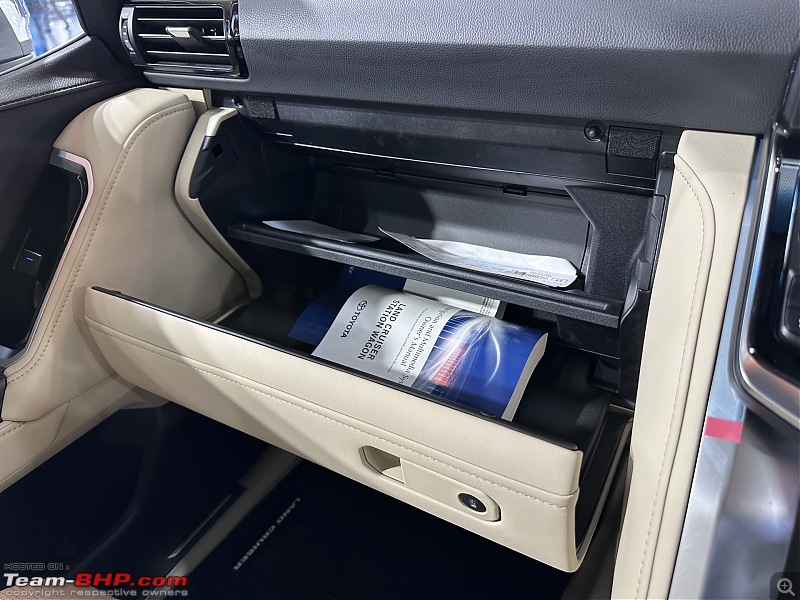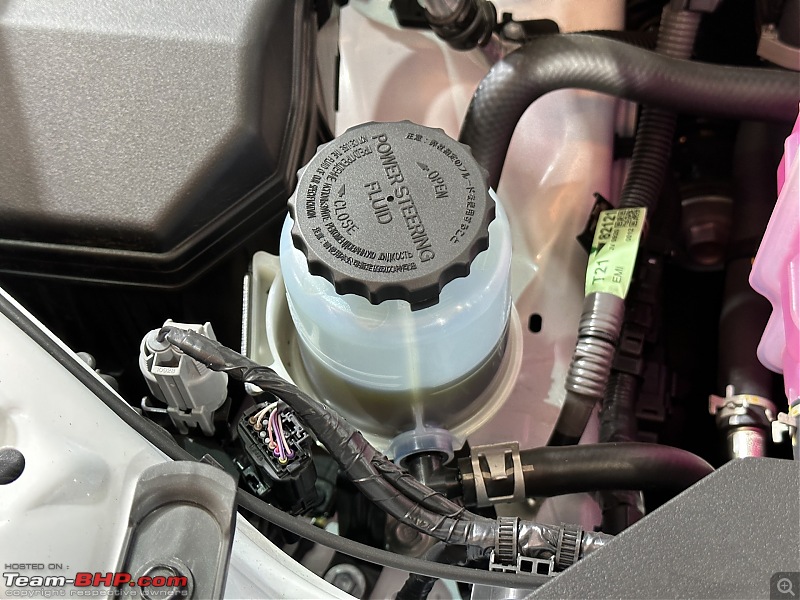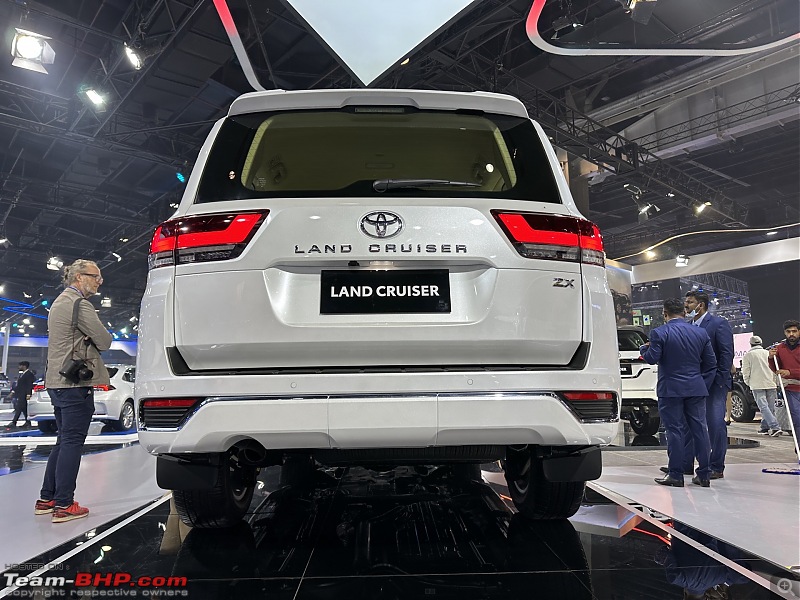Interiors
Just like the exteriors, the interiors of the LC 300 follow the "if it ain't broke, don't fix it" philosophy. Although they are a huge leap in terms of technology and equipment over the LC 200, overall design still remains familiar with more focus being laid on ergonomics and ease of use than anything else.

3-spoke steering looks similar to other global Toyotas at first glance. However, look closely and you will notice that it does get some visual enhancements in the form of brushed aluminium inserts on the spokes and a faux wood finish on the bottom-half.
Controls for the MID and HU are on the left spoke, while those for the cruise control ( and some HU related functions too) are on the right spoke. Dummy buttons on the right spoke aren't a pleasant sight on such an expensive car

Buttons for the tail gate release and switching off traction control are located to the right of the steering. Dummy buttons again are an extremely unpleasant sight:

To the left of the steering are buttons for resetting the trip meter, the terrain monitoring system and the manual DPF regeneration. The "idle-up" button can be toggled to manually increase engine speed to 1100rpm so that the engine gets upto temperature quicker:

Modes for the terrain management system can be toggled via this rotary selector. Activating the DAC Crawl switch will allow the driver to only concentrate on the steering, while the car takes care of throttle input and braking during a steady crawl. Don't miss the rocker switch for switching between 4L and 4H either:

Driver's doorpad gets a combination of leather, faux wood and black soft touch plastic. The windows and ORVM controls are placed here, as are the memory buttons for the driver's chair:

Centre armrest houses a deep cavity and can be used to store your smartphone away from prying eyes. Don't miss the button on the top-left of the cavity. It activates the cooling function:

Glovebox size is more than adequate and can easily store the owner's manual and a few other odd items:

Sunroof isn't as large as you would expect from a car of this size. The LC 300 also misses out on a panoramic sunroof and makes do with a conventional unit:

Rear seats are very well contoured with good lower back support. What is below average though is underthigh support, typical of most BOF SUVs since the floor is placed quite high:


Rear doorpads get the same treatment as the ones at the front. Don't miss the JBL branded tweeter placed next to the door handle. A total of 14 speakers make up the JBL system in the LC 300:


Rear centre armrest houses two pop-out cupholders:

The LC 300 gets a 4-zone climate control system. As a result, both the rear passengers get dedicated blower and temperature controls along with ventilated seats:

Plastic seatback pockets are quite sturdy unlike the netted ones we have seen on most other European cars of late:

White LED map lights lend an upmarket look to the cabin:

Both the rear passengers get dedicated entertainment screens as shown. Unfortunately, they aren't as versatile as one would want and primarily rely on dated HDMI inputs as a source for video streaming:

Since the Indian spec LC 300 is a 5-seater, you do get a massive boot, 1130 litres of it to be precise:

You can see one of the 14 speakers here along with an LED bootlight:

The retractable parcel tray can be seen in position here:

The 3.3L V6 diesel fills up the engine bay quite well here. Radiator and coolant overflow reservoir placement is classic Toyota


Another testament to the no-nonsense LC philosophy. Most competitors have moved on to EPS systems, but the LC 300 still sticks to a good old hydraulic power steering:

 (8)
Thanks
(8)
Thanks
 (10)
Thanks
(10)
Thanks


 (3)
Thanks
(3)
Thanks

 (1)
Thanks
(1)
Thanks

 (2)
Thanks
(2)
Thanks

 (8)
Thanks
(8)
Thanks


 (1)
Thanks
(1)
Thanks
 (2)
Thanks
(2)
Thanks















































